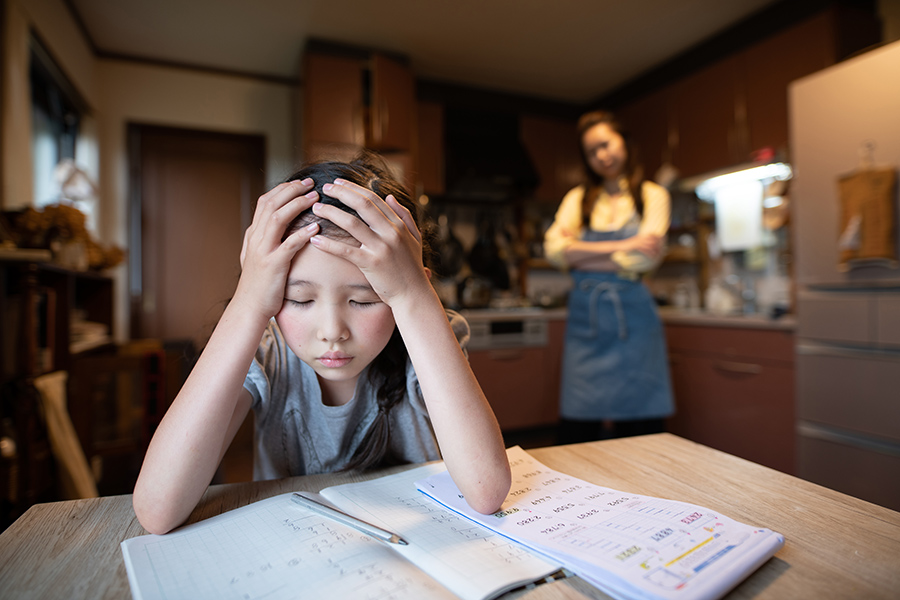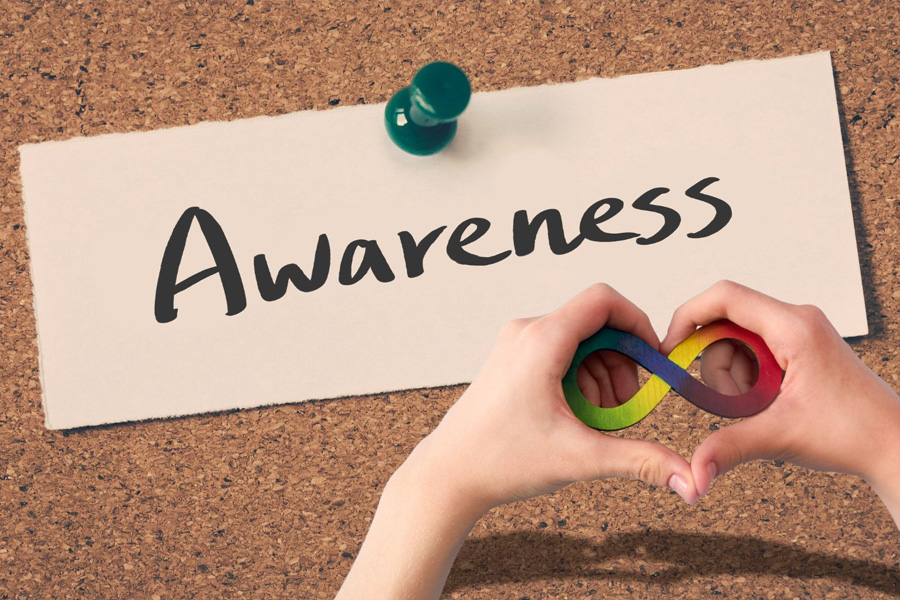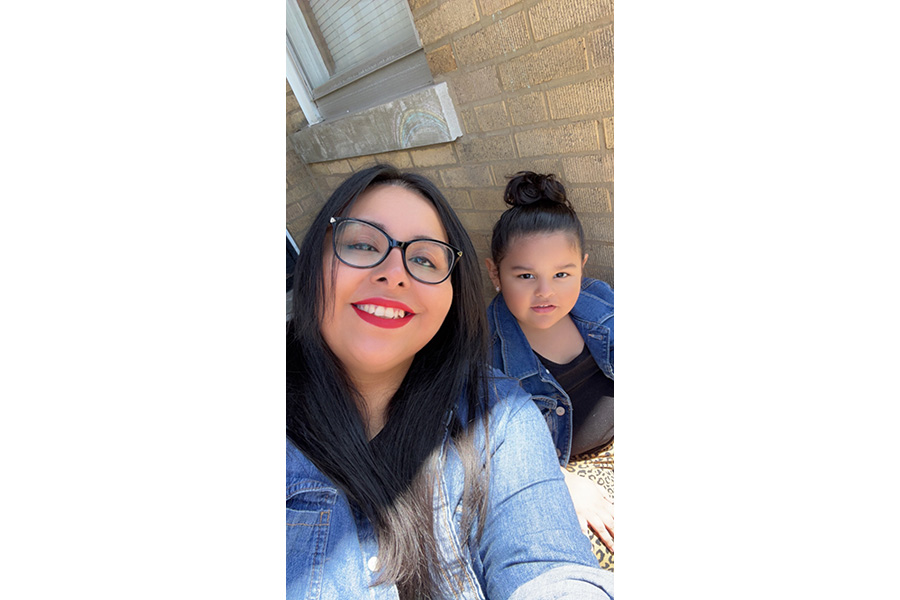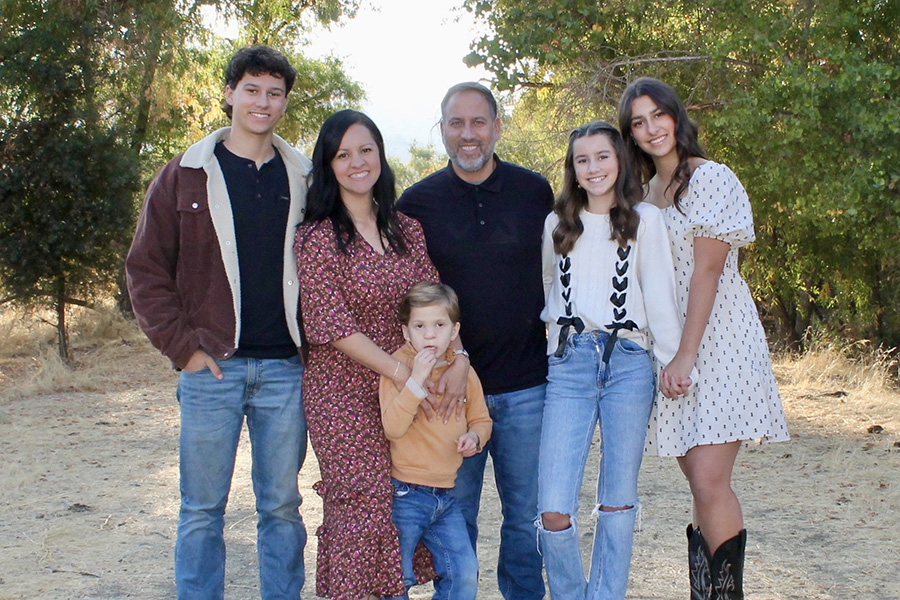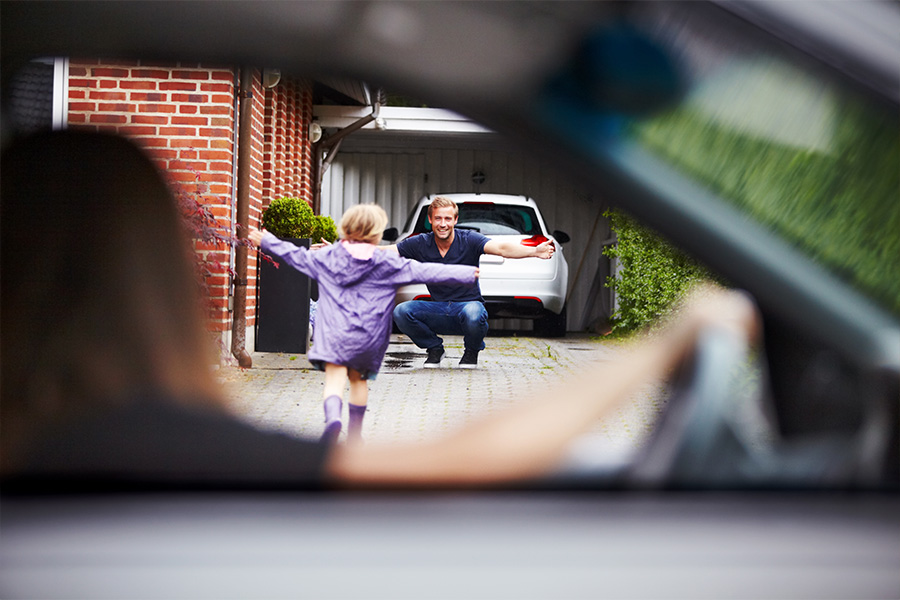Does my child have a GI issue? Is he an insomniac? Why is she struggling to get to school each day?
It’s not always easy to understand or identify when your child is struggling with anxiety. Sometimes it looks like a crabby kid, a kid who is melting down because they didn’t get “their way,” or a teen who is being disrespectful.
Sometimes, it’s even easy to mistake anxiety for a learning disability or an attention deficit disorder. For example, your child may think that he’s not good at math. Each day when it’s time for the math lesson, your child may complain of a stomachache in anticipation. He may ask to go to the school nurse. He is then missing the lesson and will struggle to complete the worksheet that is now being sent home for homework. Sometimes anxiety can look like your child is struggling with that particular subject but it is the thought that he can’t do math that leads to losing out on instruction rather than a true learning disability.
Being preoccupied with thoughts can also look like a focus issue because anxiety draws our and our kid’s attention inward. That is, your child may be internally distracted because she is worrying about her safety or your safety. She may be nervous about being called on in class and not having the right answer or not being able to produce an answer quick enough. Your child may also be worrying about another child who excludes her or make fun of her hair or sneakers.
Bottom line: Anxiety and ADHD sometimes look very much like each other, and it takes a discerning eye to figure out which one it is. And just to keep things complicated, sometimes there can be a little bit of both.
What does anxiety look like in children? There are all different variations of the presentation of anxiety in children and teens. Sometimes, those presentations are subtle and not that obvious:
- agitation.
- restlessness.
- poor focus.
- headaches, stomachaches.
- avoidance.
- tantrums.
- crying.
- refusing to go to school.
- meltdowns before school about clothing, hair, shoes, socks.
- meltdowns after school about homework.
- difficulties with transitions within school, and between school and an activity/sport.
- difficulty settling down for bed.
- having high expectations for schoolwork, homework and sports performance.
How Do I Know This is Anxiety and Not Just “Bad Behavior”?
Essentially, anxiety in children looks like negative behaviors that you may have seen in small glimpses in the past, but they are consistent and intense now. Over time, this behavior can become frustrating to parents who feel unable to manage these newly-arising behaviors that are not responding to punishment, yelling, taking away privileges, or any other method that was once effective.
Vicarious Trauma
Anxiety in children is also linked to a situation or perceived event that is frightening or traumatizing. For example, *Sarah’s parents contacted me frantically stating that their 5 year old daughter no longer wanted to go to school. She was clinging to her mother, crying, and was inconsolable at school for the first hour or so. They were not sure what had happened or why their daughter was so upset all of a sudden. In further discussion, it turned out that their daughter watched her friend’s mother being taken to the hospital by ambulance in her neighborhood. Her parents didn’t think that this affected her as it their neighbor was fine and returned home that same day. Their 5 year old daughter was vicariously traumatized by this experience and believed that if she went to school, the same thing may happen to her mother. As a result, she wanted to stay home and make sure that her mother was okay. Take note that this experience was observed and did not directly impact her or her family. However, for children the frightening experience can be experienced or observed.
Trying to find Control
In an effort to manage the strong feelings of anxiety, children and teens may begin to develop rituals, leaving them prone to Obsessive Compulsive Disorder (OCD). Children may engage in particular rituals that need to be complete in the morning, after school, or before bed in an effort to ward off potentially negative things from happening. Common themes of OCD are germ phobia, safety, perfection, and orderliness. Children may also begin to expect family members to adhere to their rituals or particular ways in which they should function in an effort to maintain safety. For example, *Sarah did not want her mother to sit on the same couch with her; she believed if they sat together, her mother would become hurt. She also wanted her mother to follow a particular path down the stairs, through the hall and into the kitchen so that she did not become ill or injured.
Ask Questions and Seek Help
Childhood anxiety can sometimes be missed when it presents as difficult or bizarre behaviors that are expected to be ‘outgrown’. If these behaviors continue for greater than two weeks:
- seek therapy for your child.
- keep a log of behaviors and what happened right before that behavior.
- ask questions of your child/teen, such as:
- What can I do to help?
- Do you know what made you feel this way?
- How do you usually find relief?
- How long have you been feeling this way?
You can also sit with your younger child, before bed, with a journal and ask your child to list all the anxious thoughts that they are having. Write them down for your child. Just listen and write. Then, take deep breaths with your child encouraging them to release these worries for the night. Then list 3 things that went well during the day – any 3 things, big or small.
*Name has been changed for identity protection purposes.





